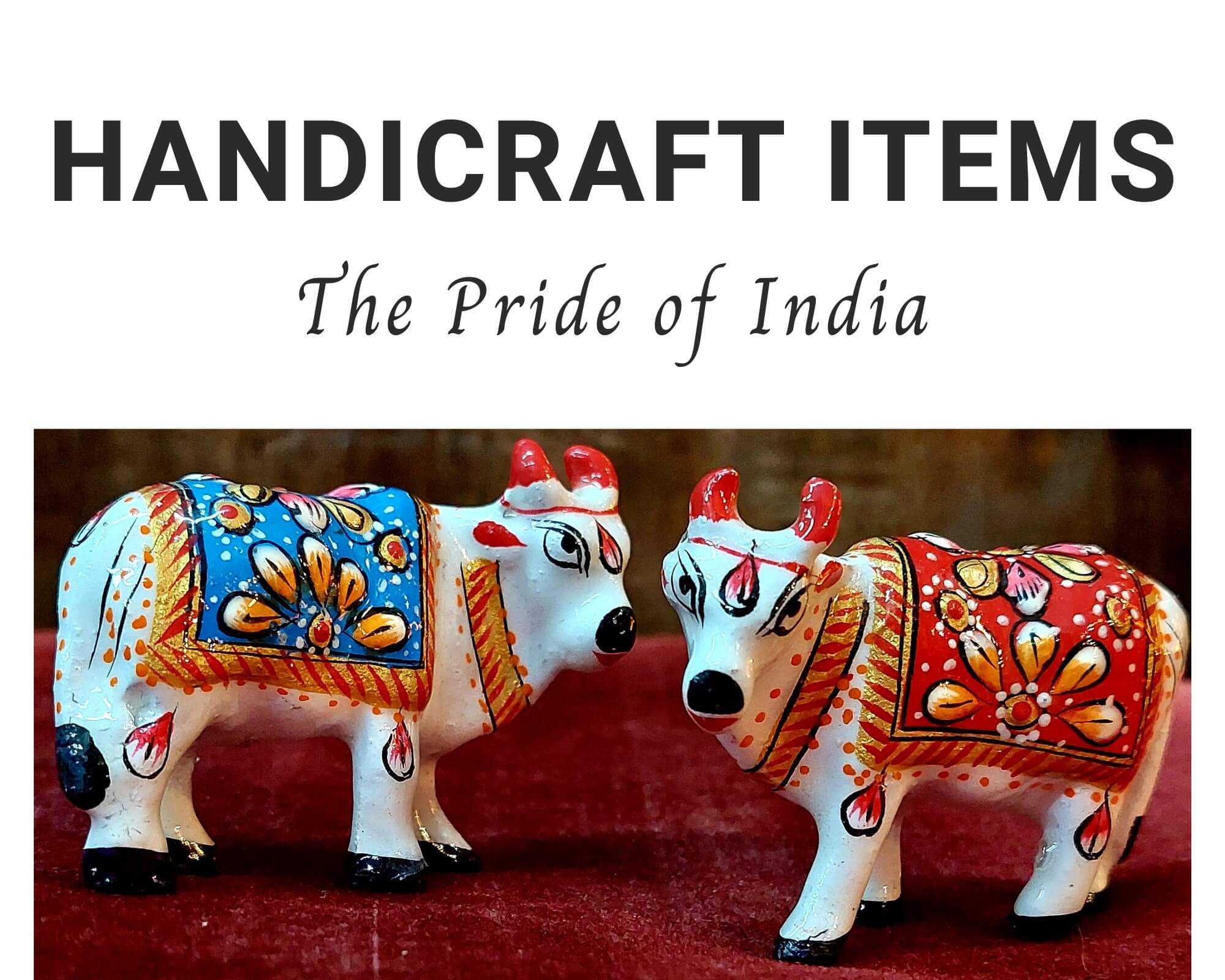Handicraft Items for home decoration in a Royal Way
For a very long time, India is famous for its traditions. In terms of art and music, India is ranked among the world’s most ethnically prosperous countries. Tourists to India also believe that the people of India are well-liked for their excellent handicraft items. India is definitely a tenting destination to consider! Each region in India has generation-long expertise in specific craft industries, be it handmade articles, or handlooms. From kutputlis to meenakari artifacts.
The handicraft items of India are really the true epitome of culture and tradition. The handicrafts in India include such a wide variety that some people still find it difficult to purchase one-of-a-kind handicraft items.
We can all agree that the rich culture of Indian handicraft items is something we are very proud of. And why not? The enrichment demonstrates integrity, love, and devotion to the elements of being in the beautiful country of INDIA.
If you agree with us, raise your hand. Now, the question is whether we really care about the ambiguous facts of ‘Handicraft items of India,’ or whether we are bothered by the zealous contributions and efforts of our artisans. The product(s) that we purchase represent their dedication and hard work in keeping the authentic taste alive while also keeping new designs and trends in mind at all times.
Let us turn the tables and take you to some fascinating facts about Handicraft items of India nonetheless, you will understand why.
A much greater challenge for tourists is locating areas where authentic handicrafts are sold. Most rural people still rely on their artistic jobs to survive, and India has succeeded in preserving its craftsmen, art, and crafts. According to official estimates, India is home to 7 million artisans.
However, data from unofficial sources indicate that the artisan strength is as high as 200 million. That’s why the popularity of Indian Handicraft items is so much in the world. For decades, the handloom and handicraft industry has been the backbone of India’s rural economy. It is one of the largest job creators after agriculture, providing a vital source of income for the country’s rural and urban populations.
The sector is well known for being a pioneer of environmentally friendly zero-waste practices and operates on a self-sustaining business model, with craftsmen often growing their own raw materials. Some statistics show that India is home to around 2500+ handicraft items. Can you believe it? No one has such diversions other than The Great Handicraft Industry. With such a high range of crafts, you need to maintain a huge amount of workforce. And thus maintaining such a huge workforce requires you to have a lot of resources.
But India is effectively managing such a huge workforce and because of this, the industry is flourishing. If the Indian region had been represented by handicraft items, it would be a vibrant diamond with pockets of handicrafts running the length and breadth of it.
Deep zaffre Jaipur pottery in Rajasthan burnished Bastar metal art in Chhatisgarh, and russet wooden toys in Sawantwadi, Maharashtra would all be featured on the Indian handicraft map. Tinkling Kutch metal bells would form Gujarat’s rivers, and ivory marble would sit atop Uttar Pradesh’s mountains.
Among all these, Rajasthan is the most common state, because you will find almost all kinds of Handicraft items in this beautiful state full of culture and Tradition. If you need wooden crafts, visit Rajasthan. If looking for handmade articles, metal items, marble decoratives, and more, visit Rajasthan. You’ll see a grand spectacle of vivid color and magnificent designs as you travel across the country’s materials landscape.
Rajasthan, for example, has protected and nurtured centuries-old crafts. Kathputli is one of these crafts. It derives from the words Kath, which means “wood,” and putli, which means “lifeless doll.” Kathputli is the art of telling stories with handcrafted puppets. The Putli Bhat community began Kathputli art over a thousand years ago. Rajasthani ballads, folk dances, and village fairs have all featured it. Because it is one of the world’s greatest puppetry forms, it has given India prominence in the world over anything else.
Also check about – How to Add Depth to Your Rooms with Dark Colours?
Katpulti is the oldest tradition of Rajasthan. Rajasthan is also well-known for its exquisite Meenakari craft, an ancient form of metal ornamentation. Colored minerals in a rainbow of dazzling hues are fused to intricately carved metals. It was originally developed by the Iranians. Indian artisans learned the skill from the Mongols, who brought it to the Indian subcontinent. It is also referred to as enamel work or metal meenakari work.
The name Meenakari is derived from the Persian word Mina, which means “azure.” Lampshades, jars, mats, tiles, and flower pots are among its products. However, it is most commonly used in jewelry. In India, the most popular Minakari colors are red and green. However, in Varanasi, Mina’s Work is also done in Pink.
The same region is home to Jaipur Miniatures. This timeless art style dates back to the tenth century and features miniature paintings with fine detailing. The first miniature paintings were discovered as illustrations in the Buddhist text Prajnaparamita. Artists captured Hindu and Jain manuscripts through miniatures during the Chalukyas’ reign, which lasted until the thirteenth century. During the Mughal era, these paintings evolved into a synthesis of Indian and Persian styles.
If this was useful for you please let me know in the comment section.



